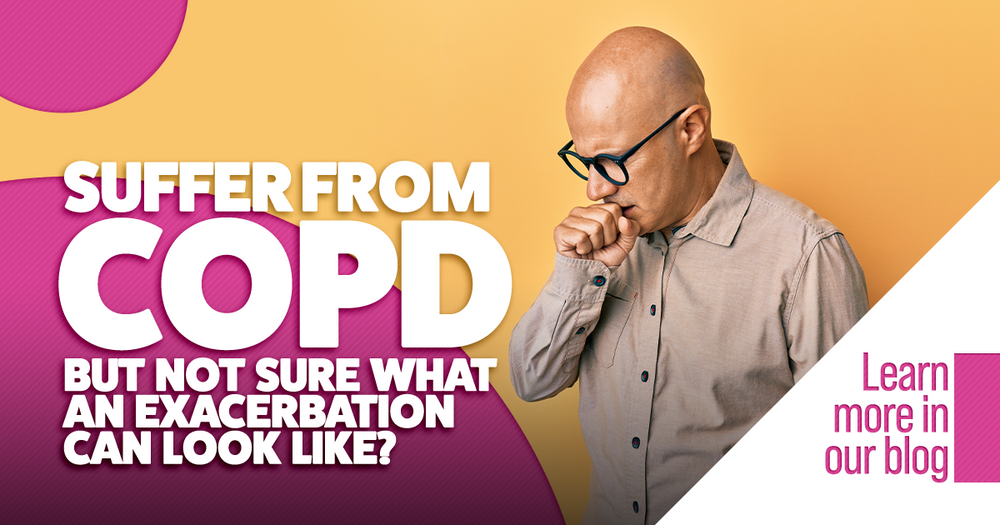If your COPD symptoms suddenly worsen, you may think it’s just a lousy breathing day. But it could be a sign of an exacerbation. If you have COPD, knowing what an exacerbation looks like can help prevent them from occurring. It can also help you get medical attention quicker and potentially save your life.
What is an Exacerbation?
COPD causes long-term progressive damage to the lungs, which affects airflow. Exacerbations are flare-ups of symptoms where symptoms are much more severe and can last for days or even weeks. Treating them may require antibiotics, oral corticosteroids, and even hospitalization. In the advanced stages of COPD, exacerbation frequency tends to increase. They may leave behind permanent, irreversible lung damage each time they occur, so those with COPD should know how to reduce their risk.
What Does COPD Exacerbation Look Like?
A COPD exacerbation goes beyond your day-to-day symptoms. Sometimes a flare-up is confused with other conditions like severe allergies or a bad cold or sinus infection. Warning signs to watch for and alert your doctor about:
- Increased coughing, wheezing, or shortness of breath
- Changes in the amount, thickness, and color of mucus
- Fatigue lasting more than one day
- Swelling of the ankles or legs
- More issues sleeping than usual
- Oxygen levels lower than average, causing the feeling of needing to increase your oxygen
Call 911 for any of these dangerous warning signs:
- Severe chest pain or shortness of breath
- Blue lips or fingers
- Confusion, disorientation, or inability to speak in complete sentences
How are they Treated?
Treating a COPD exacerbation depends on the severity of your symptoms. Most individuals with COPD have a pattern of symptoms leading up to the flare-up. If you can recognize these coming on early enough, you can take action before they worsen. Before a full-blown exacerbation, your doctor may prescribe medications that slow the infection, make it easier to breathe, or reduce lung inflammation. These include antibiotics, steroids, and inhalers.
Emergency treatments involve supporting your breathing through a device like a CPAP. If you require a ventilator, you’ll be hospitalized until your lungs clear up or become less inflamed.
Reducing Exacerbations and Improving COPD Options
Avoiding known triggers, maintaining a healthy lifestyle, and getting vaccinated against the flu and pneumonia can help reduce the frequency of flare-ups. The future is exciting for people with COPD, with several new options on the horizon allowing for better management, shortened recovery of severe symptoms, and modification of the disease itself.

Clinical research studies help evaluate the safety and effectiveness of potential new options with the help of enrolled participants. If you have COPD, research studies may be an option. Learn how you can get involved in our COPD studies here at North Georgia Clinical Research today! Call us at (678) 494-5736, or visit our website.
Sources:
https://www.copd.com/copd-progression/copd-exacerbations/
https://www.healthline.com/health/copd/exacerbation-symptoms-and-warning-signs#outlook


